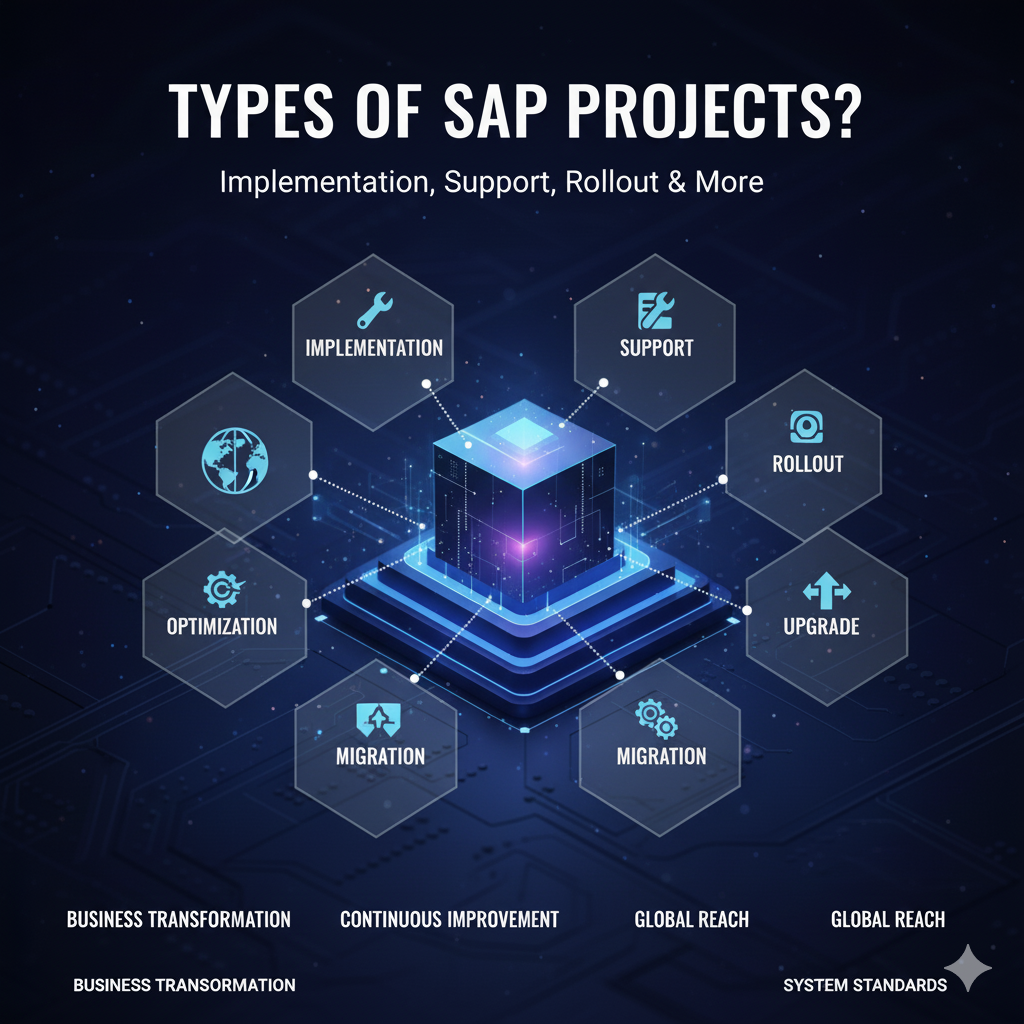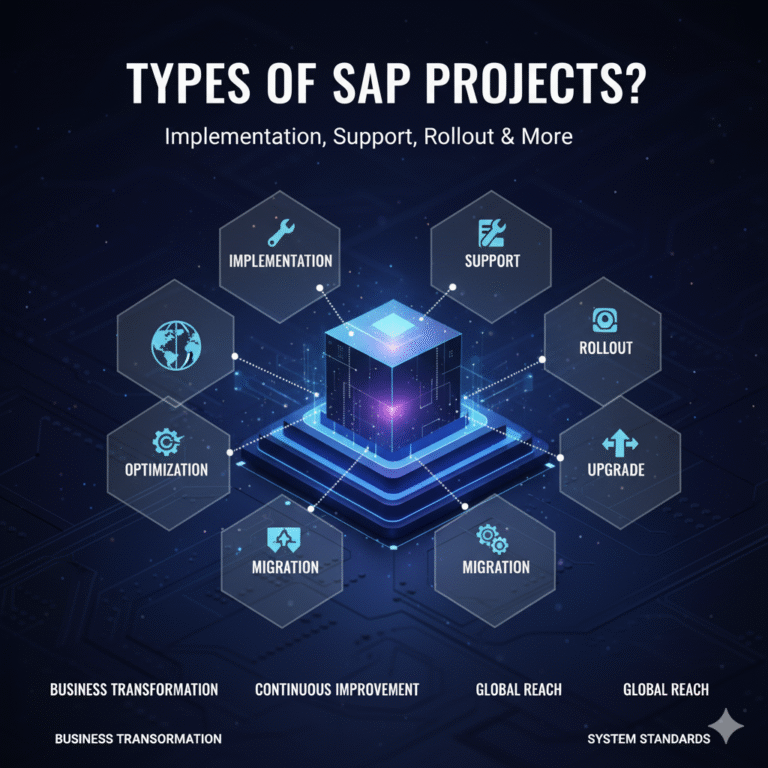Introduction to Types of SAP Projects
When companies decide to adopt SAP, they need to choose the right type of project approach. Every SAP project depends on business goals, industry size, budget, and risk appetite. Broadly, SAP projects fall under Implementation, Support, Rollout, Upgrade, and Enhancement categories. Each type has its own methodology, challenges, and benefits.

1.Implementation Projects
Implementation is the process of deploying SAP for the first time in an organization. It is the most critical and resource-intensive project type.
Big-Bang Implementation
In a Big-Bang Implementation, SAP is deployed across all business units, countries, and segments at once. While this approach saves time, it involves high risk, heavy investment, and complex execution. Very few companies prefer this due to challenges in maintaining quality and consiste
Phase-Wise Implementation
Most businesses adopt Phase-Wise Implementation, where SAP is rolled out step by step, such as country by country, or department by department. This reduces risk, spreads costs over time, and allows gradual adoption.
Methodologies for Implementation
Two popular implementation methodologies are:
- ASAP Methodology – Accelerated SAP methodology focusing on quick, structured deployment.
- Solution Manager – SAP’s advanced tool that supports project management, monitoring, and process control.
2.Support Projects
Once SAP is live, Support Projects handle day-to-day issues, troubleshooting, system maintenance, and minor enhancements. The goal is to ensure smooth business operations without disruption.
3.Rollout Projects
A Rollout Project happens when a company already using SAP in one country or business unit decides to implement it in another location. The existing configuration is reused with minor localization changes for taxes, currencies, and legal compliance.
4.Upgrade Projects
Over time, companies move to newer SAP versions, such as upgrading from SAP ECC to SAP S/4HANA. Upgrade projects improve system performance, security, and access to modern features while keeping historical data intact.
5.Enhancement Projects
Enhancement projects focus on extending the functionality of an existing SAP system. Businesses may add new modules, custom reports, workflows, or integrate with third-party applications to meet evolving business needs.
Case Example: Ashraf Group of Companies
The Ashraf Group decided to implement SAP due to challenges in consolidating financial results, managing inventory, and generating MIS reports. With multiple plants and branches across India, they faced delays in data sharing and decision-making.
To address this, they opted for a Phase-Wise Implementation and assigned the project to IBM. A dedicated team including project managers, delivery managers, consultants, and core business users (like CFO, GM, and BP heads) worked together to implement SAP successfully.
Conclusion: Choosing the Right SAP Project
Every business has unique requirements, which means choosing the right type of SAP project is crucial. While Implementation Projects bring SAP into the organization, Support, Rollout, Upgrade, and Enhancement Projects ensure it continues to evolve with the company’s needs. A structured methodology, the right consulting team, and active involvement from business leaders are key to a successful SAP project.



